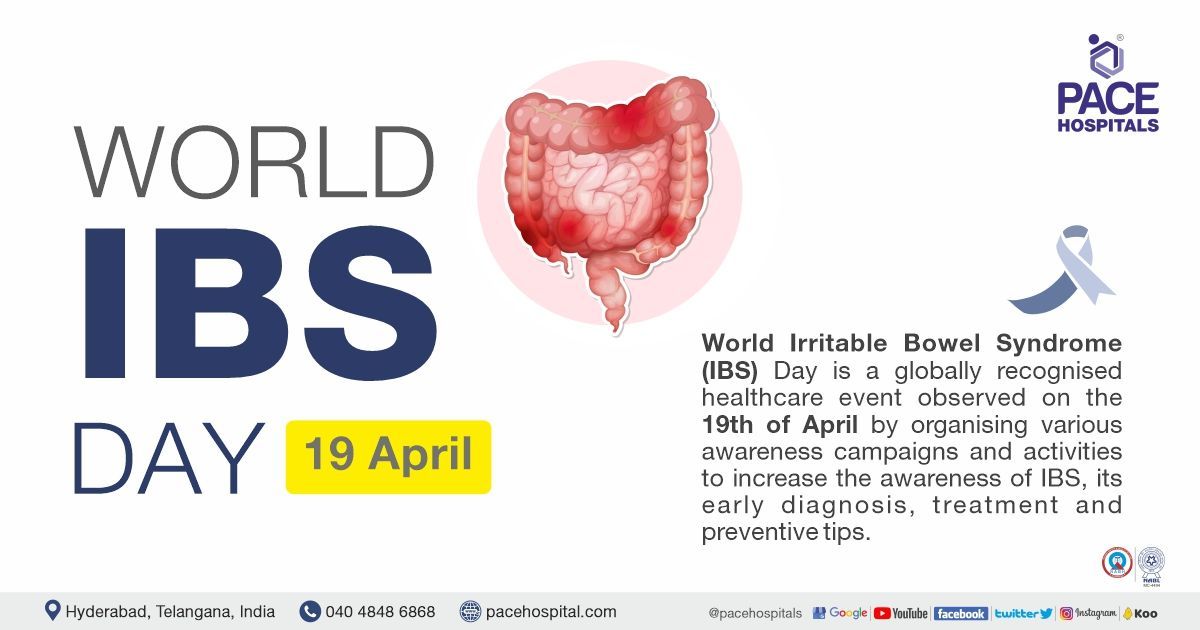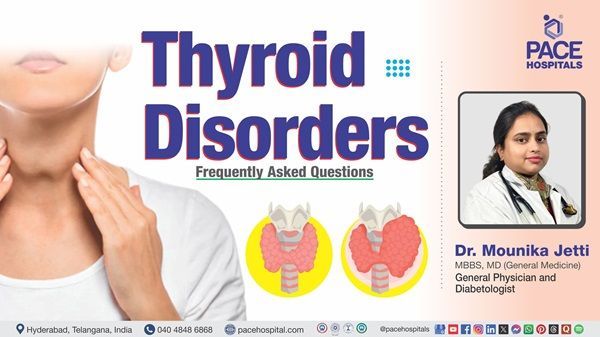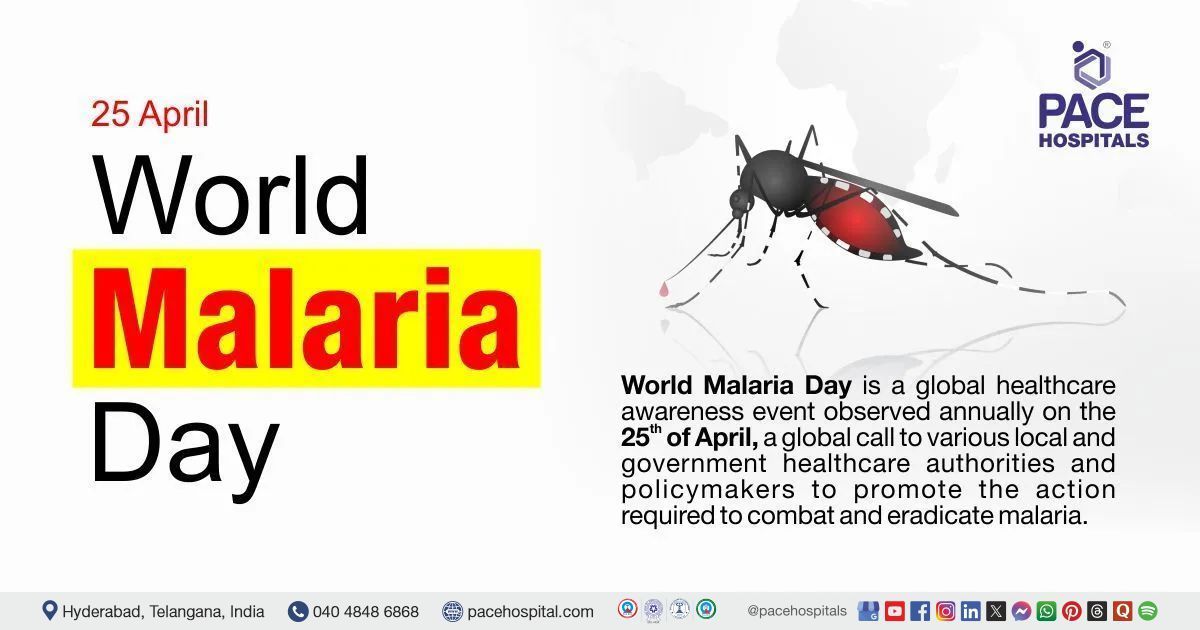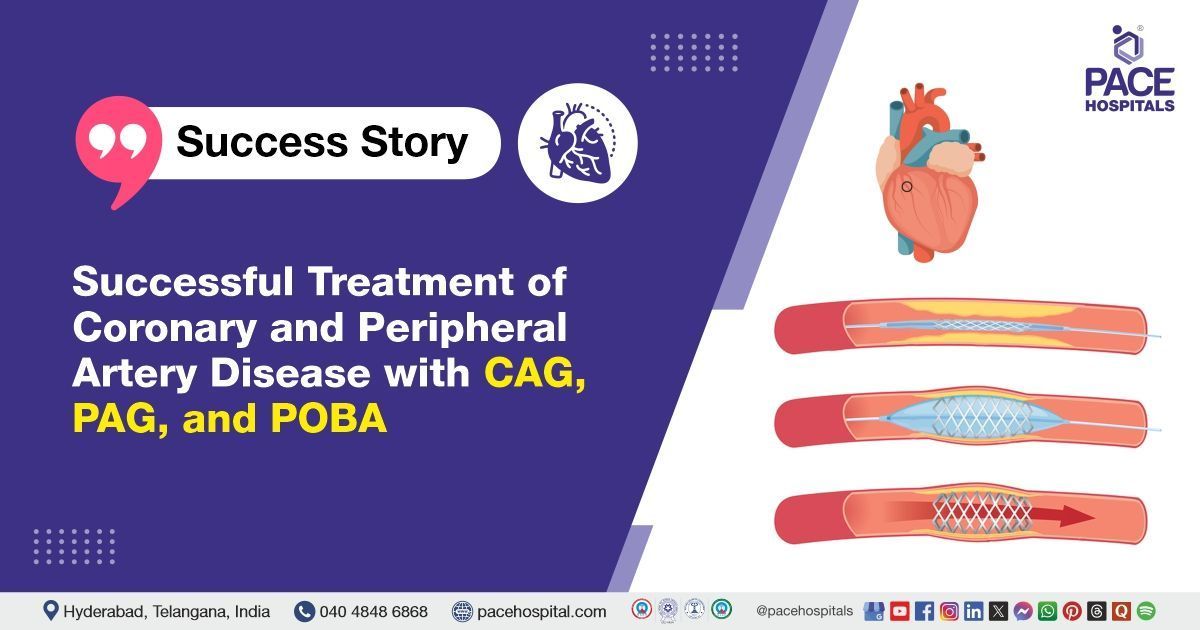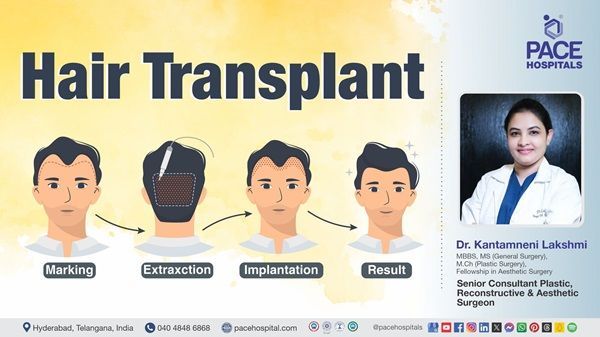Vitamin A - Function, Benefits, Sources, Deficiency
Vitamin A, a fat-soluble vitamin, is essential for human health, playing a critical role in vision, immune defence, reproduction, and cellular communication. It includes two primary types, retinoids (active forms found in animal-derived foods) and carotenoids (precursors found in plants). Both forms are necessary for the body’s optimal functioning, with a deficiency or excess leading to significant health implications.
Chemical nature and types of vitamin A
Vitamin A refers to a group of unsaturated organic compounds, including:
- Retinoids: Retinol, retinal, retinoic acid (active forms in animal sources).
- Carotenoids: Beta-carotene, alpha-carotene, and others, which the body converts into retinol.
These compounds are fat-soluble, requiring dietary fats for absorption. They are stored in the liver and released into the bloodstream as needed.
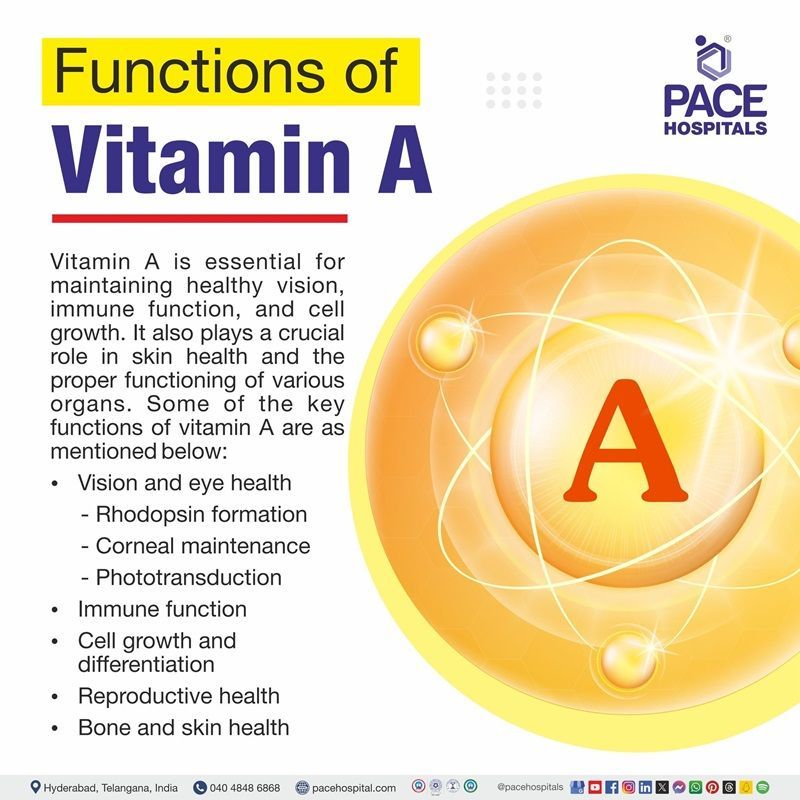
Vitamin A functions
Vitamin A is essential for maintaining healthy vision, immune function, and cell growth. It also plays a crucial role in skin health and the proper functioning of various organs. Some of the key functions of vitamin A are as mentioned below:
- Vision and eye health: Vitamin A is crucial for maintaining healthy vision, as it helps form rhodopsin, a protein in the retina that enables low-light and color vision. The role of vitamin A in vision and eye health are:
- Rhodopsin formation: Vitamin A forms rhodopsin, a pigment in the retina that enables vision in low-light conditions.
- Corneal maintenance: It keeps the cornea—the transparent front part of the eye—moist and healthy, preventing conditions like xerophthalmia and blindness.
- Phototransduction: Retinal, a vitamin A derivative, converts light into electrical signals essential for vision.
- Immune function: Vitamin A is essential for maintaining epithelial integrity, acting as a barrier against pathogens, and regulating immune responses, ensuring optimal white blood cell activity across the respiratory, gastrointestinal, and genitourinary tracts.
- Cell growth and differentiation: As a regulator of gene expression, retinoic acid ensures proper growth, repair, and differentiation of epithelial cells in tissues such as the skin, lungs, and intestines.
- Reproductive health: In men, vitamin A supports spermatogenesis, the production of healthy sperm, and in women, it facilitates normal ovulation and embryonic development during pregnancy.
- Bone and skin health: Vitamin A promotes bone remodeling and enhances skin repair by stimulating keratinocyte differentiation and reducing keratin buildup.
Dietary recommendations of vitamin A
The Recommended Dietary Allowance (RDA) for vitamin A daily requirement, expressed in retinol activity equivalents (RAE), varies by age, gender, and physiological state:
- Adult men: 900 mcg RAE/day
- Adult women: 700 mcg RAE/day
- Pregnant women: 770 mcg RAE/day
- Lactating women: 1,300 mcg RAE/day
Infants and children have lower requirements, but their needs increase with age.
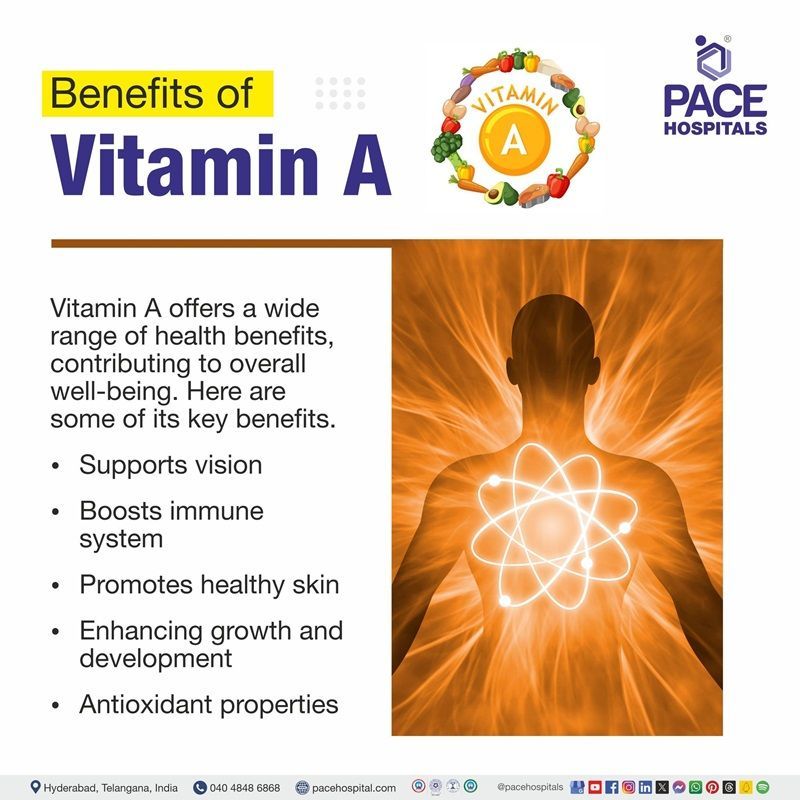
Vitamin A benefits
Vitamin A offers a wide range of health benefits, contributing to overall well-being. Here are some of its key benefits.
- Supports vision: Adequate vitamin A prevents night blindness and may reduce the risk of age-related macular degeneration (AMD), a leading cause of blindness among older adults.
- Boosts immune system: Vitamin A deficiency weakens immunity, increasing susceptibility to infections like measles and respiratory illnesses. Its Supplementation has been shown to reduce mortality in children.
- Promotes healthy skin: Vitamin A helps maintain skin integrity, reduces acne, and manage conditions like psoriasis by regulating cell turnover.
- Enhances growth and development: it is essential for skeletal growth in children and foetal organ development during pregnancy, reducing the risk of birth defects.
- Antioxidant properties: Provitamin A carotenoids, particularly beta-carotene, neutralize free radicals, lowering oxidative stress and potentially reducing the risk of chronic conditions like cardiovascular disease and cancer.
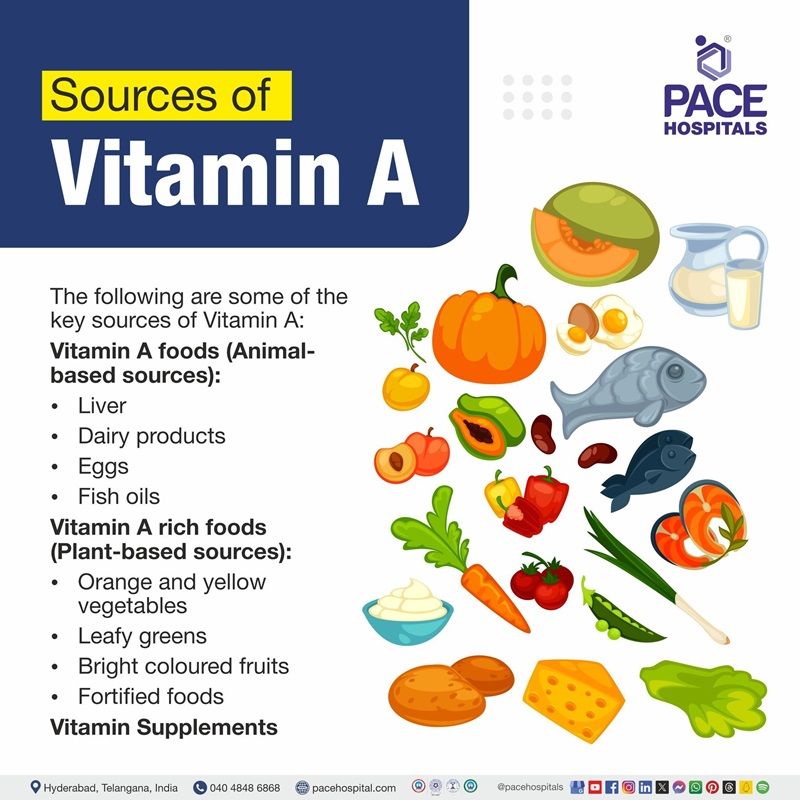
Vitamin A sources
Vitamin A is an essential nutrient that plays a crucial role in maintaining immune function, good vision, and overall health. It comes in two forms: provitamin A carotenoids (beta-carotene) and preformed vitamin A (retinol). The following are some of the key dietary sources of vitamin A:
Provitamin A Carotenoids (Beta-Carotene) Sources
Plant-based foods:
- Orange and yellow vegetables: Carrots, sweet potatoes, pumpkins, and butternut squash are excellent sources.
- Dark leafy green vegetables: Spinach, kale, and collard greens provide high levels of beta-carotene.
- Bright-coloured fruits: Mangoes, papayas, and apricots are rich in carotenoids.
- Fortified foods: Almost all breakfast cereals and infant formulas are commonly fortified with vitamin A. Margarine and cooking oils are fortified in some regions to combat deficiencies.
Preformed Vitamin A (Retinol) Sources
Animal-based foods
- Liver: Beef, fish and chicken liver are the richest sources. A small portion can meet the RDA.
- Dairy products: Milk, cheese, yogurt and butter provide moderate amounts of retinoids.
- Eggs: Egg yolks are an accessible source of vitamin A.
- Fish oils: Cod liver oil is highly concentrated with retinol.
- Fatty fish (salmon, herring): These are good sources of vitamin A, also excellent sources of omega-3 fatty acids, which are good for heart health.
Vitamin A supplements
Vitamin A supplements are easily available and serve as a controlled source of nutrition.
Tips for Incorporating Vitamin A-Rich Foods into Your Diet
- Eat a variety of colorful fruits and vegetables: Aim for at least 5 (five) servings per day.
- Include dairy products in your diet: Choose low-fat or fat-free options.
- Opt for fatty fish: Consume them at least twice a week.
- Consider fortified foods: Check labels for vitamin A content.
- Cook vegetables with a little fat: This helps your body absorb vitamin A better.
Note:
- Too much vitamin A can be harmful: It's important to consume vitamin A in moderation.
- Consult a general physician: If you have any concerns about your vitamin A intake or overall health.
- By incorporating a variety of vitamin A-rich foods into your diet, you can support your overall health and well-being.
WHO classification of vitamin A deficiency
Vitamin A deficiency can manifest clinically as xerophthalmia, which includes night blindness, Bitot’s spots, and more severe conditions like corneal xerosis and keratomalacia. Night blindness, especially common during pregnancy in developing countries, is an early clinical sign. Retinol, the primary form of vitamin A in the blood, reflects liver stores but is tightly regulated and may not correlate with dietary intake. Serum retinol levels are used to assess subclinical deficiency; levels below 0.70 μmol/L indicate subclinical deficiency, while levels below 0.35 μmol/L signal severe deficiency.
Causes of vitamin A deficiency
- Poor dietary intake, especially in developing countries.
- Malabsorption disorders like celiac disease, Crohn’s disease, or chronic pancreatitis.
- Chronic illnesses or infections, which increase the body’s vitamin A requirements.
- Alcoholism, which depletes liver stores of vitamin A.
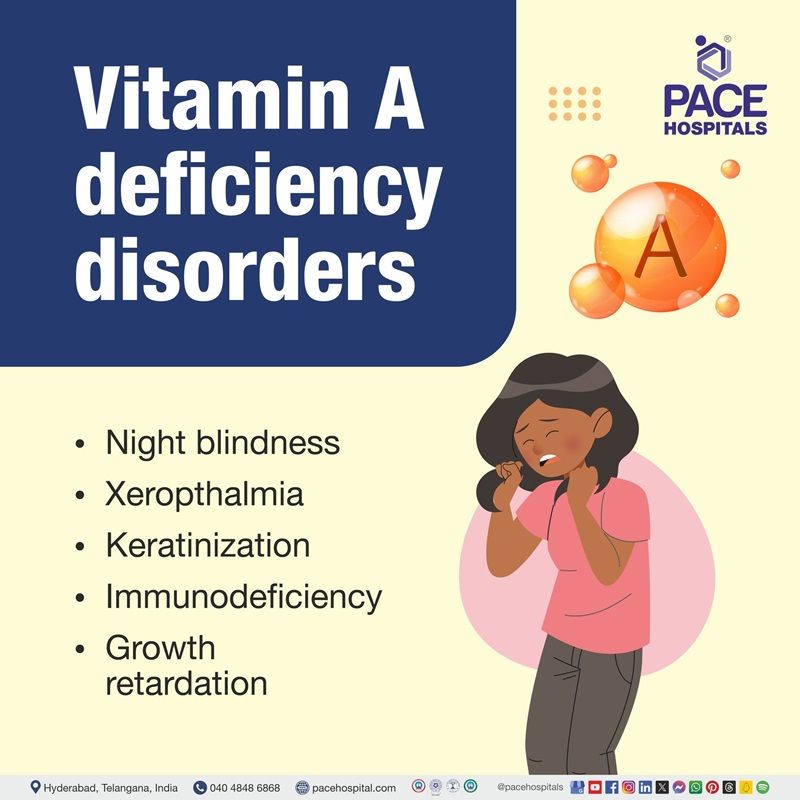
Vitamin A deficiency disorders
- Night blindness: The earliest sign, where individuals struggle to see in low light.
- Xerophthalmia: Dryness of the eyes, progressing to corneal ulcers and blindness.
- Keratinization: Thick, scaly skin due to impaired epithelial cell function.
- Immunodeficiency: Increased susceptibility to infections like respiratory illnesses and diarrhea.
- Growth retardation: In children, it impairs growth and development.
Vitamin A deficiency treatment
Vitamin A deficiency (VAD) can be treated with vitamin A supplements and improved dietary intake. Supplements, often given as a single high-dose treatment (100,000–200,000 IU for children, 25,000–50,000 IU for adults), are common in areas with high deficiency rates. Dietary sources rich in vitamin A include liver, eggs, dairy, and fish, as well as beta-carotene-rich foods like carrots, sweet potatoes, and leafy greens. Additionally, fortified foods and nutrition programs can help prevent and treat VAD, ensuring long-term health benefits.
Global impact
Vitamin A deficiency affect lakhs of children and pregnant women in low-income countries, contributing to preventable blindness and child mortality.
Management strategies
- Vitamin A capsules: High-dose vitamin A capsules or vitamin A tablets are distributed in regions with endemic deficiency.
- Dietary diversification: Encouraging the consumption of vitamin A-rich foods.
- Food fortification: Adding vitamin A to staples like rice, sugar, and cooking oil.
Vitamin A overdose and toxicity
Excessive intake of vitamin A can lead to overdose and toxicity, which may cause a range of harmful health effects such as:
Hypervitaminosis A
Hypervitaminosis A refers to the condition caused by an excessive intake of vitamin A, leading to toxicity. This can occur from consuming high doses of vitamin A supplements or large amounts of foods rich in preformed v itamin A (retinol), such as liver.
- Causes
- Overuse of vitamin A supplements.
- Excessive consumption of liver or fortified foods.
- Prolonged use of retinoid-based medications.
- Symptoms of toxicity
- Acute toxicity: Symptoms appear within hours or days of large doses, including nausea, vomiting, dizziness, and blurred vision.
- Chronic toxicity: Long-term overconsumption causes dry skin, hair loss, bone pain, hepatotoxicity, and intracranial pressure (pseudotumor cerebri).
- Teratogenic effects: Excess vitamin A during pregnancy can cause congenital disabilities, including neural tube defects and craniofacial malformations.
Carotenemia
Excessive beta-carotene can cause carotenemia, a harmless condition where the skin turns yellowish orange. Unlike retinoids, it does not lead to toxicity since conversion to active vitamin A is tightly regulated.
Striking the right balance of vitamin A
Balancing vitamin A intake is essential to leverage its health benefits without risking toxicity. This can be achieved through:
- Dietary awareness: Including diverse sources of vitamin A, particularly in regions prone to deficiency.
- Cautious supplementation: Ensuring supplements are used judiciously, particularly in populations with sufficient dietary intake.
- Public health interventions: Targeted fortification programs in communities with widespread deficiency.
Balancing vitamin A: Addressing deficiency and preventing toxicity
Vitamin A is a cornerstone nutrient for human health, supporting vision, immunity, cellular function, and growth. While its deficiency remains a significant global health issue in low-income regions, overconsumption poses risks in populations with easy access to supplements and fortified foods.
Efforts to combat vitamin A deficiency through dietary diversification, supplementation, and food fortification have proven effective in improving public health outcomes. At the same time, awareness of the risks of toxicity is crucial to preventing adverse effects. Maintaining a balanced intake is the key to harnessing the full potential of this vital nutrient, ensuring optimal health across diverse populations.
Frequently Asked Questions (FAQs) on Vitamin A
What are the natural food sources of Vitamin A?
Animal sources like liver, fish oil, eggs, and dairy products are rich in preformed vitamin A. Plant-based sources, like carrots, sweet potatoes, spinach, and mangoes, provide provitamin A carotenoids, which the body converts into active vitamin A.
What are the daily requirements for Vitamin A?
The Recommended Dietary Allowance (RDA) varies:
- Adult men: 900 mcg RAE/day
- Adult women: 700 mcg RAE/day
- Pregnant women: 770 mcg RAE/day
- Lactating women: 1,300 mcg RAE/day
- Children's needs range from 300-600 mcg RAE/day depending on age.
How does Vitamin A support the immune system?
Vitamin A enhances immune function by maintaining the integrity of mucosal barriers in the skin, respiratory tract, and gut. It also boosts the production and activity of white blood cells, helping the body fight infections more effectively.
What are the symptoms of Vitamin A deficiency?
Common symptoms include night blindness, dry eyes, keratinized skin, stunted growth in children, and increased susceptibility to infections. In severe cases, deficiency can lead to complete blindness due to corneal damage (xerophthalmia).
What happens if children are deficient in Vitamin A?
Children with vitamin A deficiency are at higher risk for severe infections like measles, delayed growth, night blindness, and even death in extreme cases. Supplementation programs have significantly reduced these risks in affected regions.
What is Vitamin A?
Vitamin A is a fat-soluble vitamin essential for various bodily functions, including vision, immunity, cell growth, and reproduction. It exists in two forms: preformed vitamin A (retinoids from animal sources) and provitamin A (carotenoids from plant sources), which the body converts into active vitamin A.
Why is Vitamin A important for vision?
Vitamin A is crucial for maintaining healthy vision as it forms rhodopsin, a pigment in the retina that helps detect light. It also supports the cornea's health, preventing dryness and damage, thus avoiding night blindness and other vision-related disorders.
How is Vitamin A deficiency treated?
Deficiency is treated with high-dose vitamin A supplements, typically administered orally or via injection. Long-term management includes dietary improvements with vitamin A-rich foods and, in some regions, fortified foods to prevent recurrence.
Can too much Vitamin A be harmful?
Yes, excessive intake of preformed vitamin A can cause hypervitaminosis A, leading to nausea, dizziness, liver damage, bone pain, and even birth defects in pregnant women. Excess beta-carotene may cause skin yellowing but is not toxic.
What is the difference between retinoids and carotenoids?
Retinoids are preformed vitamin A found in animal-based foods and are immediately active in the body. Carotenoids, found in plants, are precursors to vitamin A and must be converted into the active form by the body.
How does Vitamin A benefit the skin?
Vitamin A promotes healthy skin by regulating cell production, reducing keratin buildup, and enhancing skin repair. Retinoids are widely used in skincare to manage acne,
psoriasis, and signs of aging by improving skin texture and tone.
Is Vitamin A safe during pregnancy?
Vitamin A is essential for foetal development, but excessive intake of preformed vitamin A can be teratogenic, causing birth defects. Pregnant women should avoid high doses of supplements and liver while ensuring adequate intake from balanced diets.
What are Vitamin A-rich fruits and vegetables?
Brightly coloured fruits and vegetables like carrots, sweet potatoes, pumpkins, mangoes, apricots, spinach, and kale are excellent sources of provitamin A carotenoids. Consuming these regularly helps meet daily vitamin A needs.
Are there fortified foods with Vitamin A?
Yes, foods like milk, margarine, breakfast cereals, and cooking oils are often fortified with vitamin A to combat deficiencies, especially in developing regions where natural dietary sources may be limited.
How does Vitamin A affect bone health?
Vitamin A plays a role in bone remodelling by supporting osteoblast and osteoclast activity. However, excessive intake can weaken bones, increasing fracture risks. Maintaining a balanced intake is critical for bone health.
What is carotenemia, and is it harmful?
Carotenemia is a harmless condition where the skin turns yellow-orange due to excessive intake of beta-carotene. It is not toxic and resolves with reduced consumption of carotenoid-rich foods like carrots and sweet potatoes.
Can Vitamin A help prevent chronic diseases?
Provitamin A carotenoids, such as beta-carotene, have antioxidant properties that reduce oxidative stress. This may lower the risk of chronic diseases like cardiovascular disease, certain cancers, and age-related macular degeneration.
How is Vitamin A absorbed and stored in the body?
Vitamin A is absorbed in the intestine with dietary fats and bile acids. It is stored mainly in the liver, where it can be released into the bloodstream as needed. Proper fat intake is essential for its absorption.
Can vegetarians get enough Vitamin A?
Yes, vegetarians can meet their vitamin A needs by consuming plant-based sources rich in provitamin A carotenoids like carrots, spinach, and mangoes. However, vegetarians must ensure adequate fat intake for proper absorption.
Should I take Vitamin A supplements?
Supplements may be necessary if you have a deficiency, certain medical conditions, or dietary restrictions. However, excessive use can lead to toxicity. Consult a healthcare expert to determine if supplementation is needed and at what dose.
Share on
Request an appointment
Fill in the appointment form or call us instantly to book a confirmed appointment with our super specialist at 04048486868


